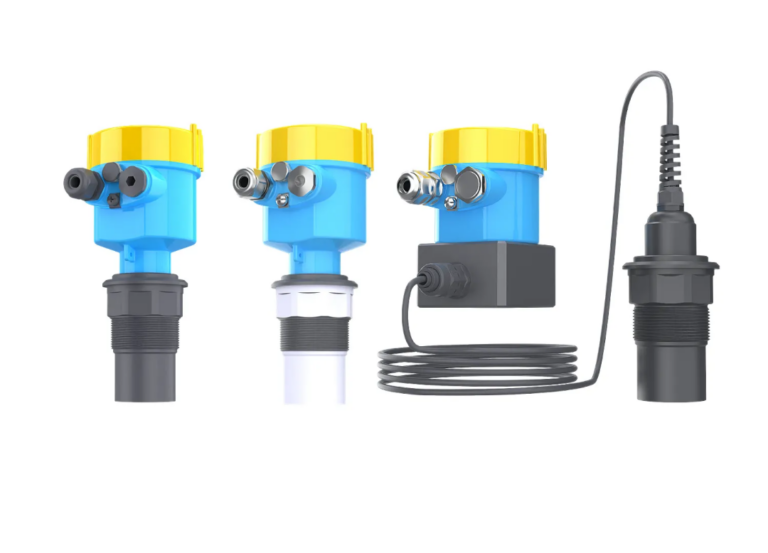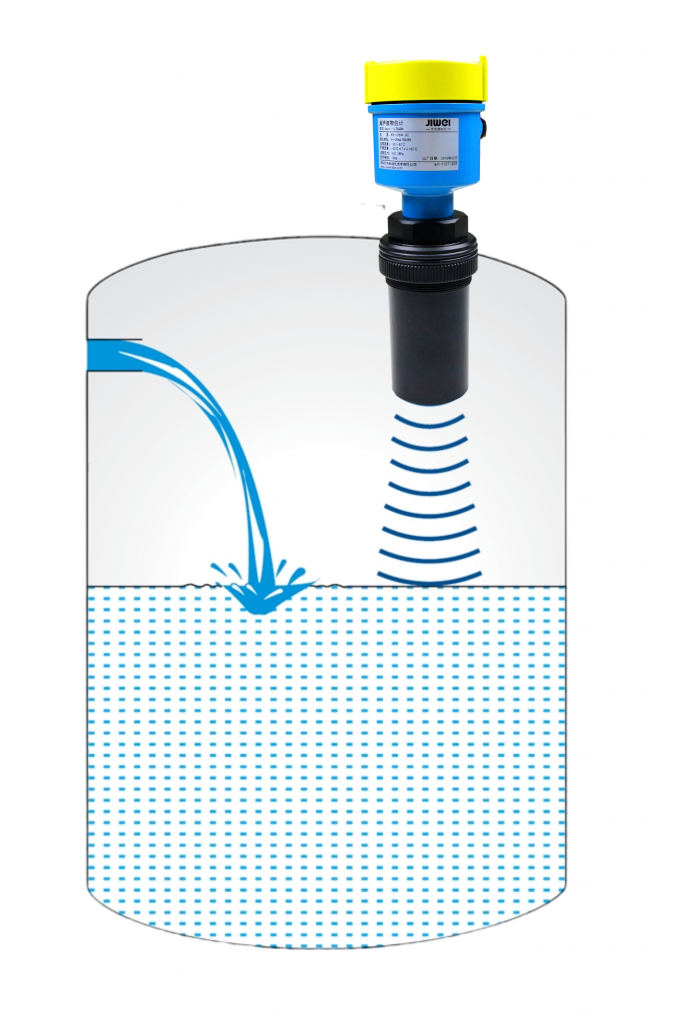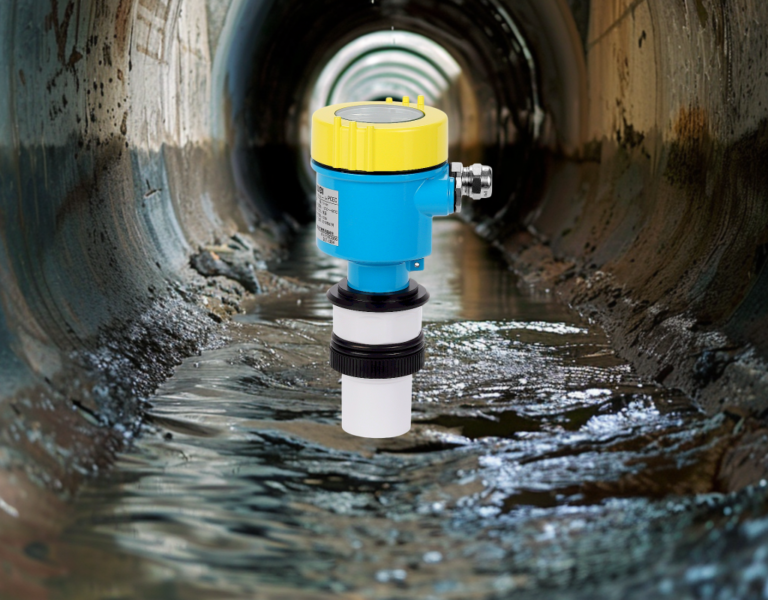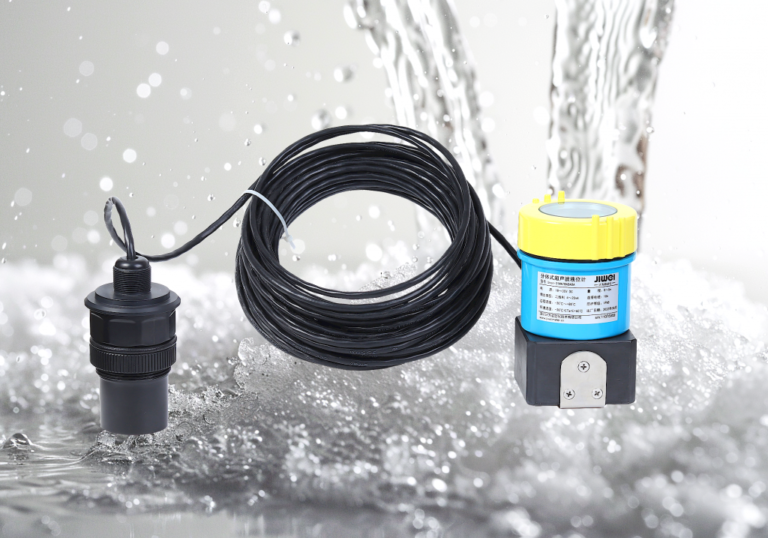1. Key Application Scenarios
✅ Tank Level Monitoring (Crude Oil, Refined Products, LPG)
Ultrasonic level transmitters offer non-contact, continuous level measurement, making them ideal for monitoring storage tanks containing crude oil, refined fuels, and liquefied petroleum gas (LPG). With measuring ranges up to 15 meters and accuracy up to ±0.3%, they ensure precise inventory control.
Operating reliably across a wide temperature range (-40°C to 150°C), these instruments can withstand extreme ambient and process conditions commonly found in petroleum storage facilities. For instance, in large crude oil storage tanks, integrating ultrasonic level sensors with temperature transmitters enables the construction of automated inventory management systems, greatly improving measurement efficiency and accuracy.
✅ Oil-Water Separator & Reactor Monitoring
During oil-water separation, ultrasonic sensors detect the interface between immiscible fluids with differing densities, optimizing phase separation efficiency. In harsh process environments such as catalytic cracking reactors, ultrasonic level meters with PTFE (Teflon) probes and ATEX-certified explosion-proof housings ensure safe and corrosion-resistant operation, even under high pressure and aggressive chemical exposure.
✅ Pipeline and Wellhead Level Control
In pipeline operations, ultrasonic level sensors detect liquid accumulation to prevent blockages and flow disruption. For wellhead monitoring, they provide real-time data on subsurface liquid levels, supporting intelligent optimization of pump cycles and reducing energy consumption.
✅ LNG Tank Monitoring and Cryogenic Conditions
LNG storage involves extreme cryogenic conditions (down to -162°C) and variable internal pressures (typically 0.1 to 3 MPa). To maintain accuracy, ultrasonic level transmitters must feature pressure compensation and sound velocity calibration algorithms, ensuring reliable measurements even in sealed, low-temperature environments.

2. Technical Advantages and Environmental Adaptability
🌡️ Durability in Harsh Conditions
Corrosion Resistance: Probes are available in 316L stainless steel or ceramic for long-term exposure to corrosive media such as hydrogen sulfide and acidic compounds.
Explosion Protection: Certified to Ex d IIC T6 standards, suitable for flammable or hazardous areas such as refineries and offshore platforms.
Anti-Interference Performance: With built-in echo filtering algorithms (e.g., FFT spectrum analysis), these sensors effectively suppress interference from foam, vapor, or dust, ensuring stable data output.
🤖 Smart Features and System Integration
Flexible Communication: Supports industry-standard outputs including 4-20mA + HART and RS485/Modbus, enabling seamless integration with DCS and SCADA systems.
Built-in Temperature Compensation: Equipped with PT100 sensors to automatically adjust for variations in sound velocity due to temperature changes (e.g., velocity shifts ~6 m/s per 10°C), minimizing environmental impact on accuracy.
💰 Cost Efficiency and Low Maintenance
Non-Invasive Installation: As a non-contact device, it requires no tank penetration, reducing installation costs and leakage risk.
Low Maintenance Requirements: Typically requires only biannual cleaning of the probe surface (e.g., using ethanol) and annual sound speed calibration, keeping downtime to a minimum.

3. Selection and Installation Best Practices
📌 Selection Criteria
Medium Properties: High-viscosity fluids like crude oil require high-frequency probes (1MHz) for better penetration; light oil products can use standard 40kHz sensors.
Environmental Conditions: Enclosed tanks with pressure require pressure-compensated models; outdoor installations should meet IP68 waterproof rating.
🧰 Installation Guidelines
Maintain a clearance between the probe and tank wall of at least 10% of the measuring range.
Keep installation tilt angle ≤5° to avoid sidewall reflections.
Avoid turbulent areas near inlets, agitators, or spray zones to prevent false echoes.

4. Case Studies and Value Realization
🏭 Refinery Tank Upgrade Project
A large refinery replaced traditional float-type level gauges with remote ultrasonic level transmitters (range: 12m, accuracy: ±0.2%). As a result:
Maintenance costs dropped by 60%
Inventory error was reduced from ±3% to ±0.5%
System integrated with ERP for automated stock reporting
🛢️ Offshore Drilling Platform
In high-humidity, salt-laden offshore environments, ultrasonic sensors with IP68 protection and 316L stainless steel housing were deployed to monitor separator levels. Compared to capacitive sensors, failure rates dropped by over 90%, significantly boosting reliability and reducing manual inspections.

5. Future Trends in Ultrasonic Level Measurement
Multi-Parameter Sensing: Future sensors may integrate density, temperature, and dielectric constant measurements, offering a more complete picture of the tank’s internal state.
AI-Powered Signal Processing: Machine learning algorithms will enhance echo recognition in complex scenarios (e.g., foam layers, turbulence), improving reliability under difficult conditions.

🔚 Conclusion
Ultrasonic level transmitters have become a key tool in the oil and gas industry, offering non-contact, high-precision, and intelligent monitoring for a wide range of applications—from storage tanks and pipelines to reactors and LNG systems. As the industry moves toward smarter and more integrated solutions, ultrasonic technology will continue to evolve, providing safer, more efficient, and more accurate level measurement solutions.
💡 Interested in product selection or project support? Contact our technical team at Dalian Zero Instrument Technology Co., Ltd for expert advice and customized solutions.
